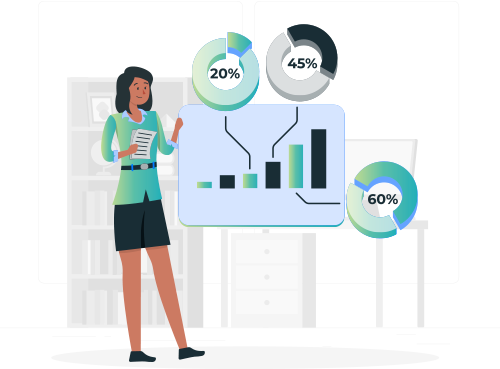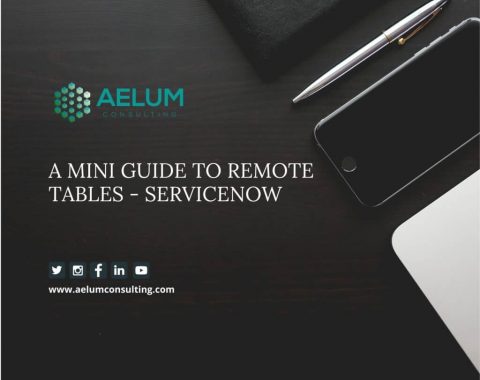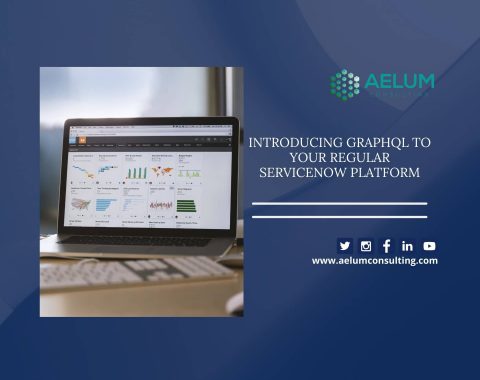Make decisions for strategy, planning, developing, troubleshooting, root cause analysis, and executing changes using CSDM that helps you connect terminology.

ServiceNow CSDM
ServiceNow CSDM (Common Service Data Model) is a data model that allows organizations to maintain a single, centralized view of their IT infrastructure, services, and other business assets.
- Offers a standard schema to map & manage assets across different ServiceNow modules, like Incident, Problem, Change, & Configuration Management.
- Enables organizations to create a common language for IT and business stakeholders, helping to break down silos and promote collaboration.
- Provides a structured way to organize data across the entire IT service lifecycle, from planning and design to operation and maintenance.
- Provides a set of out-of-the-box integrations with popular IT tools and platforms, allowing organizations to import and map data quickly.
ServiceNow CSDM use cases
IT Asset Management
CSDM provides a unified view of IT assets across the organization, including hardware, software, and virtual resources. It allows organizations to track asset ownership, lifecycle, and utilization and identify potential risks and vulnerabilities.
IT Service Management
CSDM enables organizations to map IT services to the underlying infrastructure and applications, providing a comprehensive view of service dependencies and relationships. It can help quickly identify the root cause of service disruptions and minimize impact.
Change Management
CSDM allows to map changes to the underlying infrastructure and applications, providing a complete audit trail of change activities and their impact on IT services. Ensure changes are adequately tested & approved and do not result in unexpected disruptions.
Risk Management
CSDM can help to identify potential risks and vulnerabilities in the IT infrastructure and applications, including security risks, compliance risks, and operational risks. It can help to prioritize risk mitigation efforts and ensure that critical assets are protected.
Business Service Management
CSDM provides a holistic view of business services and their underlying IT components, allowing them to understand the impact of IT on business operations. It can help align IT investments with business goals and prioritize service improvement efforts.
Cloud Management
CSDM can manage IT resources and services in the cloud, including public, private, and hybrid cloud environments. It can ensure its cloud resources are appropriately aligned with business needs and minimize the risks associated with cloud adoption.
How Does the ServiceNow CSDM Model Work?
ServiceNow CSDM (Common Service Data Model) is a data model that provides a standardized schema for organizing and managing IT assets, services, and other business resources. Here’s how the CSDM model works:
Data Modeling
The CSDM data model defines a set of standard classes, attributes, and relationships to represent different types of IT assets & services. These classes include Configuration Item (CI), Business Service, Technical Service, Location, Person, and many more. Organizations can extend the CSDM schema to include custom classes and attribute specific to their business needs.
Data Integration
Organizations can integrate data from various sources, including ServiceNow modules, external systems, and third-party tools, into their CSDM instance. It provides a standardized way to map and normalize data from different sources, making it easier to manage and analyze the data.
Data Visualization
ServiceNow provides a set of visualization tools, including service maps, dependency views, and dashboards, that allow organizations to view and analyze data in their CSDM instance. These tools provide a visual representation of the relationships between IT assets and services to quickly identify dependencies, potential issues, and areas for improvement.
Data Governance
CSDM provides a standardized approach to data governance, including data quality, data privacy, and data security. Organizations can use CSDM to define data policies and standards, as well as to monitor compliance and enforce data-related regulations and laws.
Data Management
CSDM provides a centralized repository for managing IT assets and services, including configuration data, lifecycle information, and relationships. Organizations can use CSDM to automate discovery, inventory, and configuration management tasks and track changes and incidents related to IT assets and services.
ServiceNow CSDM Roles.
System Administrator
Responsible for configuring and maintaining the ServiceNow instance, including the CSDM data model. This role involves setting up user accounts, configuring access controls, and managing system settings.
Data Modeler
Responsible for designing & implementing the CSDM data model, including classes, attributes, & relationships. This role involves working closely with stakeholders to align the CSDM schema with business needs.
Integration Developer
Responsible for integrating data from external systems & sources into the CSDM instance. This role involves creating and maintaining data integrations, including data sources, maps, and transformation scripts.
Service Owner
Responsible for defining and managing IT services in the CSDM instance. This role involves identifying service dependencies, defining service levels, and monitoring service performance to track the complete process.
Configuration Manager
Responsible for managing configuration data in the CSDM instance. This role involves maintaining accurate & up-to-date configuration data, tracking changes, & ensuring it supports IT service management processes.
Data Steward
Responsible for ensuring the quality and accuracy of data in the CSDM instance. This role involves defining data standards and policies, monitoring data quality, and resolving data-related issues.
IT Asset Manager
Responsible for managing IT assets throughout their lifecycle. This role involves tracking asset inventory, managing procurement & disposal, and ensuring compliance with software licensing and maintenance agreements.
Business Analyst
Responsible for identifying business requirements and translating them into technical specifications for the CSDM instance. They understand stakeholders’ needs to align CSDM schema and data integrations.
ServiceNow CSDM Examples
Here are some examples of how ServiceNow CSDM (Common Service Data Model) can be used in real-world scenarios:
IT Service Management (ITSM)
ServiceNow CSDM can be used to manage IT services and assets, such as computers, servers, and applications. For example, CSDM can track the dependencies between IT services and the underlying infrastructure, enabling IT teams to identify and resolve issues quickly.
Configuration Management Database (CMDB)
CSDM can be used as a foundation for a CMDB, which is a centralized database that stores information about IT assets and their relationships. It provides a standardized data model for IT assets and services, making populating and maintaining a CMDB easier.
Incident Management
CSDM can be used to support incident management processes, such as identifying the impact of an incident on IT services and assets. It enables IT teams to quickly identify affected services and assets and prioritize incident resolution based on their criticality to the business.
Business Service Management
CSDM supports business service management processes, such as mapping IT services to business processes and outcomes. It enables IT teams to prioritize IT investments & resources based on their impact on business objectives, defining the relationships between IT services and business processes.
Change Management
CSDM can support change management processes, such as identifying the potential impact of a change on IT services and assets. It enables IT teams to assess the impact of a change and plan accordingly, minimizing the risk of service disruptions or outages.
Service Catalog Management
CSDM can support service catalog management processes, such as defining and managing IT services and service offerings. It enables IT teams to map the relationships between services and the underlying infrastructure, making managing and maintaining service offerings easier.
CSDM And CMDB
Here’s a tabular comparison between CSDM and CMDB:
| Parameter | CSDM | CMDB |
| Purpose | Provides a standardized data model for IT services and assets. | Acts as a central repository for IT assets and their relationships. |
| Scope | Supports IT service management (ITSM) processes | Primarily used for configuration management |
| Data Model | More flexible and extensible, with a focus on relationships between assets and services | More rigid, with a focus on hardware and software configurations |
| Customization | Highly customizable and extensible | Customization options are limited |
| Integration | Can integrate with other ServiceNow modules, such as ITSM and ITOM | Integrates with other ServiceNow modules as well as third-party tools |
| Upgradeability | Changes made to the data model during upgrades do not require extensive customization | Changes made to the data model during upgrades may require customization |
| Adoption | Relatively new and requires training and understanding of CSDM concepts | Well-established and widely used in IT organizations |
| ROI | Can provide greater ROI by enabling IT organizations to better understand the relationships between IT services and assets, and to more effectively manage these relationships | Can provide ROI by reducing the time and effort required to manage IT assets and configurations |
How Can Aelum Consulting Help with ServiceNow CSDM?
Aelum Consulting is a Premier ServiceNow Partner firm specializing in helping organizations maximize the value of their investments in ServiceNow. In particular, We can help with the ServiceNow CSDM (Configuration Service Database Management) module.
Here are some of the ways that Aelum Consulting can help with ServiceNow CSDM-
Design and Implementation
We can design and implement a CSDM aligned with your business needs and goals. It includes defining your configuration items (CIs), creating relationships between CIs, and setting up the necessary workflows and processes.
Data Integration
Our experts can integrate data from other sources into your CSDM, ensuring a complete and accurate view of your IT environment. It includes integrating data from discovery tools, asset management systems, and other sources.
Customization
We can help you tailor your CSDM instance as per your needs to make the most of your ServiceNow platform. This process includes creating custom fields, workflows, and reports and integrating them with other ServiceNow modules.
Maintenance and Support
We can provide ongoing maintenance and support for your CSDM, ensuring that it continues to meet your needs as your business evolves. It includes testing your system from the core and offering suggestions to make it work accurately.
ServiceNow CSDM Relationships
In ServiceNow CSDM (Common Service Data Model), relationships are a key feature that enables you to map the dependencies and associations between IT assets, services, and business processes.
Parent-child relationship
Define a hierarchical relationship between IT assets or services. For example, a server may be the parent of a virtual machine, or an IT service may be the parent of a sub-service.
Dependency relationship
Define a dependency between two IT assets or services. For example, an application may depend on a database, or a network device may depend on a switch.
Membership relationship
Define a membership relationship between an IT asset or service & a group or category. For example, a server may be a member of a server farm, or a network device may be a member of a VLAN.
Reference Relationship
Reference one IT asset or service from another. For example, an incident may reference a specific IT asset, or a change request may reference a specific configuration item.
Contains Relationship
Define the contents of an IT asset or service. For example, a server may contain virtual machines, or an IT service may contain sub-services.
Used by relationship
Define how an IT asset or service is used by another IT asset or service. For example, a database may be used by an application, or a service may use a server.
Frequently Asked Questions
CSDM (Common Service Data Model) is a data model in ServiceNow that provides a standardized way to manage IT assets, services, and business processes. It enables IT teams to map the dependencies and associations between IT assets, services, and business processes and to manage these relationships more effectively.
CSDM (Common Service Data Model) is a data model in ServiceNow that provides a standardized way to manage IT assets, services, and business processes. It enables IT teams to map the dependencies and associations between IT assets, services, and business processes and to manage these relationships more effectively.
CSDM and CMDB (Configuration Management Database) serve different purposes and have different strengths and limitations. While CSDM is designed to support ITSM processes and provide a flexible data model for managing IT services and assets, CMDB primarily focuses on configuration management and is more rigid in its data model.
CSDM and CMDB (Configuration Management Database) serve different purposes and have different strengths and limitations. While CSDM is designed to support ITSM processes and provide a flexible data model for managing IT services and assets, CMDB primarily focuses on configuration management and is more rigid in its data model.
Some of the benefits of using CSDM in ServiceNow include the following:
- The standardized data model for managing IT assets, services, and business processes
- Improved understanding of relationships between IT assets, services, and business processes
- Better alignment of IT strategy with business goals
- More effective management of IT services and assets
- Greater ROI by reducing the time and effort required to manage IT assets and configurations
To get started with CSDM in ServiceNow, you can begin by understanding the data model and the different relationships defined between IT assets, services, and business processes. You can also use ServiceNow’s CSDM Accelerator to quickly set up a pre-configured data model with best practices and templates.
Yes, CSDM in ServiceNow is highly customizable and extensible. You can customize the data model to meet your organization’s needs and create your relationship types and attributes.
Yes, CSDM in ServiceNow can integrate with other ServiceNow modules, such as ITSM and ITOM. It can also integrate with third-party tools through ServiceNow’s IntegrationHub.
Our Clients


























































